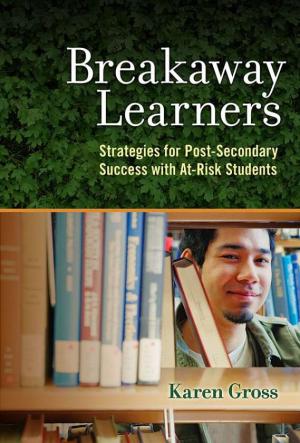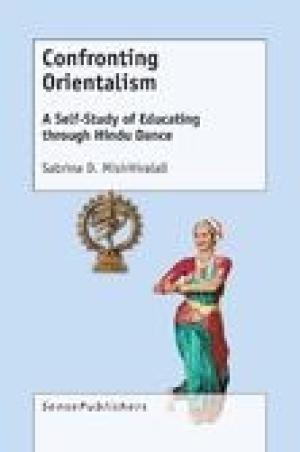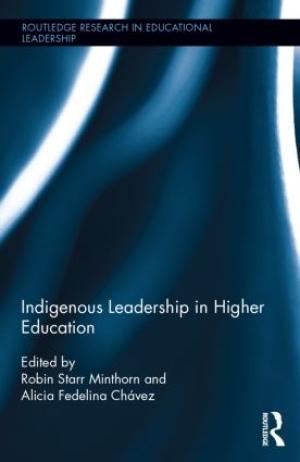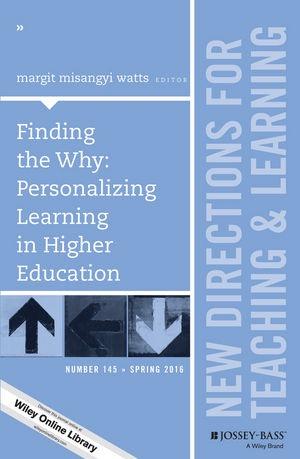Resources by Regina Pfeiffer

Two root words for education, educare and educere respectively express the complementary principles, to train or mold, and to lead out from. Of the two root words, Karen Gross’s book exemplifies educere, to lead out from, since her basic premise is to meet “students where they are and asks – demands – that institutions do vastly more to understand and respond to the students now enrolled in our educational system” (15). More than a student-centered learning approach to education, Gross suggests that the educational system as a whole should assist students in developing lasticity, a term she uses to describe the quality necessary to enable breakaway students not only to complete their degrees, but also to succeed as adults in the working environment. Gross prefers the term “breakaway learners” rather than “at-risk learners” because it describes more accurately that these students are breaking away from the societal, economic, and familial circumstances that often have hindered their progress in the educational system. She notes that these students have developed the capacity, often overlooked, for lasticity. She defines lasticity as a set of conditions that enables individuals to flourish in education and life. Lasticity is built upon a two-part equation of six qualities (the six Ts) and five building blocks. While she does explain the six Ts (trust, transparency, tranquility, teachers and teaching, tolerance, and temperance), Gross focuses mostly upon the five building blocks of elasticity, plasticity, pivoting right, reciprocity, and belief in self. Within her chapters, she provides clear examples of each of these five building blocks, noting that the first three are centered on the students themselves, whereas the last two require engagement between students and institution. For example, her chapter “Pivoting Right,” while centering on the individual, does describe four ways educators can foster making wise decisions. While Gross addresses developing lasticity in higher education, she also notes that the educational system as a whole, from early childhood to college, requires a re-examination of its purpose and goals. As such, Gross recognizes the challenge of changing the educational pipeline and landscape that would enable the development of lasticity. She identifies both macro and micro challenges that need to be surmounted. Further, she addresses the hurdle of money and provides suggestions as to how to assist students better, even to the recommendation of changing the FAFSA form itself to make it more accessible to all parents and students. Even though her text focuses on changing the educational pipeline, some of her examples can be used now by educators and within institutions. Developing trust, enabling student voices, and encouraging belief in self can be done in many of the ways she suggests as well as through understanding better those whom we help learn along the journey of life. In essence, Gross would probably agree that the process begins with changing the focus of education from educare to educere.

Sabrina D. MisirHiralall uses Kuchipudi dance rather than Western-based pedagogical and philosophical methodology to educate non-Hindus about her religious tradition. In her text, Confronting Orientalism: A Self-Study of Educating Through Hindu Dance, MisirHiralall describes her journey from learning this style of dance as a young woman to engaging learners in experiencing and thus better understanding the Hindu tradition through an epistemological approach that uses dance as means of dispelling perspectives based on a colonialist point of view and its subsequent influence on modern pedagogy. Her main purpose in doing so is to confront orientalism and address two of the primary lenses through which non-Hindus view what is called Hinduism. The first of these lenses sees adherents such as herself as exotic. The second lens imposes a Western understanding of religion on what she describes as a way of life (174). In an extensive introductory chapter, MisirHiralall describes personal experiences as a child, and later as a young woman, that led her to consider methodology drawn from traditional ways of learning that utilize dance, storytelling, and music, rather than from texts. Why she has selected dance as the primary means of educating becomes clear; Through dance, the stories that shape the religious life of Hindus come alive. Dance invites her as the educator to present an authentic approach that teaches and informs. Teaching through dance allows her to interact more with the learner in both preparing for and experiencing the dance. In subsequent chapters, MisirHiralall examines how effective teaching through dance can be and where it may not meet her expectations in overcoming orientalism. In her chapter “The Gazes,” MisirHiralall identifies different kinds of gaze: Imperial, Western male, and sacred. While her main objective is to encourage the sacred gaze, she describes how she continues to be subject to and the subject of the Western male gaze that perpetuates the exotic lens. The concept of gaze can be a complicated and multifaceted one. What she describes about gazes could also be applied to teachers and professors who encounter gazes of interest or disinterest. Gazes from learners are not limited to those she described. Instructors are subject to many types of gazes and are seen through many lenses. Because this is a self-study, MisirHiralall includes references from her journal and supports her stance on teaching space, gaze, and epistemology with extensive research. Her text invites educators to consider how extensively Western methodology permeates the educational system and what challenges should be faced in overcoming “the illusionary boundaries of the West and the East” (176). This work suggests a way forward by which educators could engage personal assumptions and pedagogical

Excellence is seldom achieved alone. These words express one of the major themes of Indigenous Leadership in Higher Education, edited by Robin Starr Minthorn and Alicia Fedelina Chávez. Consisting of autobiographical narratives, the editors and contributors weave a blanket of experiences and guiding principles which illustrate and encourage the involvement of Indigenous leaders throughout the academy. Many of the narratives begin in the traditional manner with the authors situating themselves within their maternal and paternal lines, recognizing the interconnectedness of the present to the past in order to lead future generations well. That sense of community permeates the various narratives, weaving a thread into the blanket of colors that blends the experiences and insights into what constitutes Indigenous leadership. This blend of narratives is most evident in the second and the final chapters, in which the editors succinctly gather individual contributors’ words and correlate them to particular themes that serve as a wheel of knowledge in chapter two and summarize potential methods for incorporation into higher education in the final chapter. In chapter two, “Collected Insights,” the editors provide a wheel of four major components of what constitutes Indigenous leadership. The last chapter highlights approaches and philosophies, strategies, academics, and means of working with students to promote and encourage leadership for Indigenous peoples. While it may be tempting to read just these two chapters because of the breadth contained therein, the narratives themselves expand on one or more of the dimensions discussed in these two chapters. One of the major themes is that Indigenous leadership is communal rather than a solo endeavor; Bryan McKinley Jones Brayboy writes that “Indigenous leadership requires individuals to see themselves as part of a unified whole” (53). In chapter two, the editors provide other examples that demonstrate the importance of connection to the community through its elders and the people for whom one serves. Even though most of the narratives are directed toward Indigenous leadership in higher education, many of the principles can be applied to all persons in the academy. The narratives help educators rethink how to provide opportunities for all students to grow in wholeness and wisdom, not just knowledge of facts. Among the qualities the editors describe as “what we strive to embody,” (17) qualities that may resonate with all Indigenous persons, for me, one is clearly lacking. As a Native Hawaiian, I would include gratefulness. While this quality may be imbedded in the concepts of generosity, humility with confidence, and spirituality, I found few expressions of gratitude within the narratives. This disconcerted me because it is inconsistent with what I learned from my kupuna, my Elders. I would hope that, while this embodiment is not expressly evident in the narratives, it is part of their respect for the Elders who have wrapped them in the blankets of experience and provided them with the warmth that enabled them to be Indigenous leaders.

Whenever I’m asked, “How are your classes going?” my answer traditionally has been, “Ask the students.” As more faculty members shift their pedagogy to a student-centered learning, their focus must include not only delivering the content but also inviting students to explore the why of education. The articles in Finding the Why: Personalizing Learning in Higher Education edited by margit misangyi watts (sic), identify key ways to encourage students to discover the purpose of higher education as more than training for a career. While many of the articles describe institutional changes that have been developed to address the student success beyond the university, the principles behind such designs can be incorporated by individual faculty members in approaching how to present their courses’ content. One of the key principles is to encourage students to identify the applicability of a liberal-arts education to professional courses. One means by which this can be accomplished is described in “Integrative Learning: Making Liberal Education Purposeful, Personal, and Practical.” Ann Ferren and Chad Anderson describe several examples from various colleges that integrate learning across curricula and are adaptable even for larger institutions, such as designing opportunities for students to integrate curricula using collaborative projects, partnerships with the local community for service-learning, and making connections among disciplines. Furthermore, in “Project-Based Learning in Colleges of Business: Is It Enough to Develop Educated Graduates?” Penny Smith and Lindsey Gibbon note that business leaders are seeking qualities such as critical thinking skills, identifying and using creative problem solving, and communicating effectively. They note that “for business schools to graduate ‘well-educated’ students, they must forge and engage entire academic villages” (43) in preparing business students for their careers. Another important component of finding the why requires understanding the challenges in culture that affect the attitudes impacting student-centered education. Several of the chapters incorporate strategies to change the culture at institutions themselves to meet the ongoing challenges to student success. Among such recommendations are faculty “talking to students in a way that is supportive and encouraging” (29) or engaging in the six “P’s” of place, preparation, pathways, plan, purpose, and personal connection as explained by Sanford Shugart in “Why Higher Education: Lessons Learned in a Learner-Centered College.” While many of the articles describe specific activities involving changes within the entire institution, such as integrative classes or designing a community college’s plan from its inception, the authors do challenge individual faculty to incorporate helping students find the why within their particular courses. The key to student success in many of the articles involves engaging students individually, not just collectively. Therefore, some of the strategies discussed can be applied by individual faculty on a smaller scale. While my answer to “How are your classes going?” may be the same, my intentionality within my course itself should have students answering in the positive.